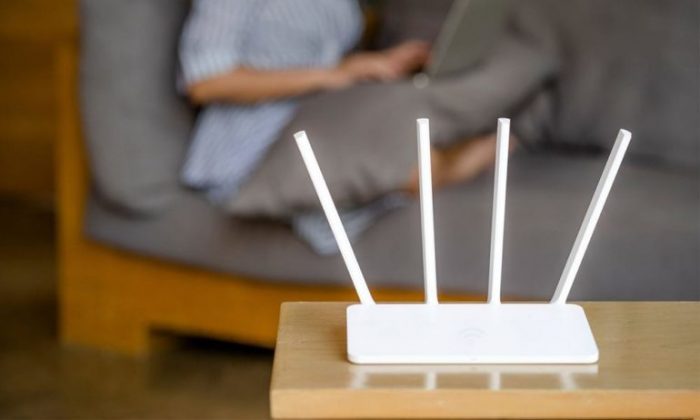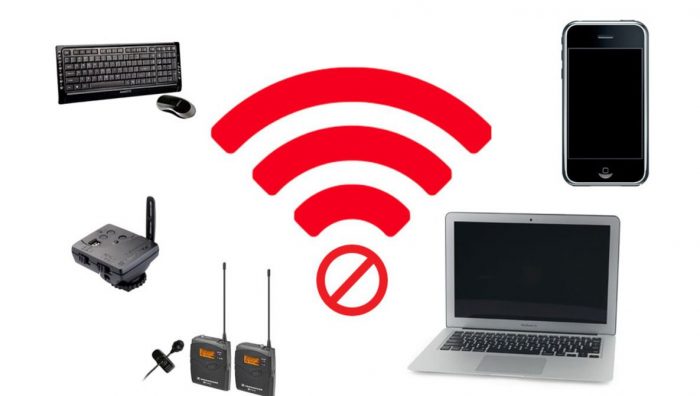At close range, WiFi radiation exposure might be dangerous, and long-term or chronic exposure may cause serious health problems. So let’s begin with the guide on how to block wifi signals.

What Is WiFi?
WiFi, commonly known as WLAN, is a wireless network with at least one antenna linked to the internet and wireless communication devices such as laptops, computers, cell phones, and so on. The WiFi network employs pulsed electromagnetic frequencies (EMFs).
A WiFi system’s artificial EMF is typically polarized, potentially more harmful than one that isn’t since it exerts relatively stronger forces on chemical groups that are electrically charged. When deciding if WiFi is safe, it’s crucial to consider electromagnetic pulse intensity, specific intensities, and exposure duration.
What Is EMF?
EMFs are energy fields that are invisible and are created by electricity. We are constantly exposed to EMF radiation since many of today’s most popular electronic products, such as Wifi routers, produce it.
EMF radiation may seriously harm human health and lead to several serious problems. That’s why we are providing a guide on how to block wifi signals which emit EMF radiation.
Why Should WiFi Signals Be Blocked?
People who use WiFi inside their houses are continuously exposed to EMF radiation throughout the day. Low-gigahertz EMF radiation, emitted by wireless routers, is regarded as possibly harmful to people. Age, duration, general health, and overall exposure to wideband EMF all contribute to the potential threat posed by WiFi routers.
This may cause concern in some people and possibly cause various health issues linked to WiFi signals. Dizziness, lightheadedness, anxiousness, and even problems falling asleep are among the symptoms that some people experience.
Is Keeping a WiFi Router in Your Bedroom Safe?
Keeping a router in your bedroom is generally not a good idea. When the router is close by, you will be exposed to excessive EMF and RF radiation. The closer this radiation is to you, the more dangerous it is. Additionally, being exposed to EMF radiation may harm your health, as we have mentioned some effects above.
How to Block WiFi Signals
Mylar blankets
You may surely use Mylar blankets to prevent WiFi from entering the room. You can line the blankets up against the walls of your bedroom, but make sure the right side is facing outward (you want the aluminum to be facing outward so it blocks signals).
Aluminum
To keep EMFs out of space, you may line the walls with Mylar blankets or do the same thing with a sheet of aluminum foil. Just make sure the aluminum is outside to get the most out of it. Since aluminum foils and sheets are widely available and reasonably priced, doing it this way is significantly more straightforward.
WiFi blocker paint
Yes, there is paint that interferes with WiFi. You might try to obtain this specific paint, which is excellent at preventing EMFs from entering a room. Getting this paint can be difficult, but the high-quality variety is not.
Metal
Metal is the best signal-blocking substance. Because it conducts electricity, metal is the toughest material to pierce. What connection exists between WiFi and electricity? Metal may absorb radio signals since they are electromagnetic waves.
Metal objects, such as doors, furniture, structures, and walls, can significantly reduce or eliminate WiFi signals. The WiFi signal will be weaker if there is more metal in the path between your WiFi router and the connected device.
Move your router
Place your Wi-Fi router at least 8 inches away from where you and your family spend most of your time. Move it to the floor or, better yet, a remote part of the house if it’s connected to a desktop computer where your kids complete their homework. When not in use, your router should ideally be unplugged.
Adjust the router/modem settings
You can modify various settings on your router or modem to lower your exposure to EMF dramatically. These consist of scheduling, channel usage, and power output. You must have your Internet Service Provider’s (ISP) gateway IP address and password to access your router settings. Occasionally, this is printed on the bottom of your router.
Use a router guard
Metals used to make router guards partially block high-frequency radiation. They are not a fully enclosed Faraday cage because you would not receive any wireless signal.
The issue is that depending on where you are in the house, you might not have a wireless connection where you need it, and it might entirely drop out. After you’ve made a purchase, you can’t change this until you transfer the router to a different location.

Protection Cap
The EMF Protection Cap is made from specialist materials intended to shield the brain from dangerous radiation. It is individually sewed to eliminate any gaps the EMR might pass.
Because even the brim is made of these radiation-blocking materials, your head will be entirely protected. Also, the cap is trendy and resembles a standard baseball cap.
Use a dirty electricity filter
Dirty electricity is produced when electronic equipment manipulates electric currents into the required format and voltage. The wiring system may experience electrical surges as a result.
The production of dirty energy by electronic equipment like WiFi routers, phone chargers, and computers may be a substantial source of dangerous electromagnetic frequencies (EMF) in a structure. Consider placing dirty electrical filters on outlets throughout the home and workplace to lessen this impact.
Related: How to Block EMF From Power Lines
Conclusion
That ends our progressive guide on how to block WiFi signals. We provided several straightforward but efficient solutions to the EMF radiation issue in this guide, but it is up to you to put them into practice. We hope that you find our guide helpful and that it has given you some crucial information on how to block WiFi signals.
